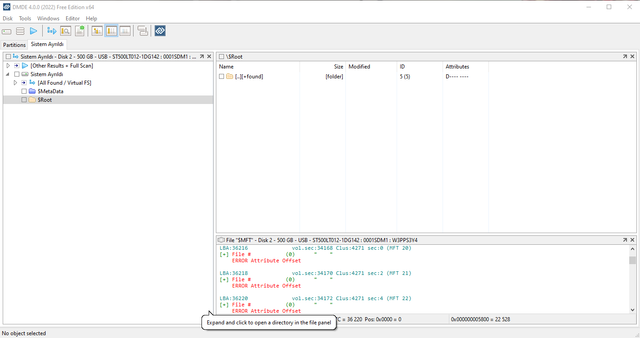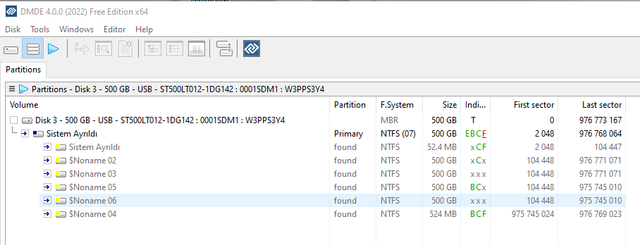So, a relative brought me a HDD, telling that it's not working. It's a thin 2.5" on an external enclosure, and it's clear that the enclosure is big for it (it was able to jiggle inside). I plugged it to the computer using my own HDD dock, and it reports "This partition is corrupt and unreadable". Even chkdsk (in my defense, it's a backup drive and the data inside wasn't REALLY important) refuses to work (Sees that it's NTFS, but "unreadable").
So, I assumed the worst (probably the shock from the jiggling one day smashed something inside, right?) and started poking around a little. Ran a ddrescue on it directly, which completed with %100 recovery rate and no bad sectors (Weird, right?) and a carve using PhotoRec was successful, and (although the names are gone) I have all the data I need inside, verified and working (only if someone could sort through 600k+ files for me...).
After getting the data out of there I started tests. For SMART, programs aren't really sure, some (CrystalDiskMark, HD Sentinel) report meaningful and all green data, some (SeaTools, AOMEI Partition Assistant I tested for some reason) tell that the drive doesn't report SMART at all. HD Sentinel reports 2813 connection faults (which didn't increase once through all testing and copying done, so I assume it's past disconnections) but nothing's even yellow. Full surface tests and SMART self checks come out all green. Read tests don't report anything out of the ordinary. The drive has a normal sound, no clicks, scratches, just a normal whirring. TestDisk (although it can't work on the drive) reports a healthy NTFS boot sector and bad MFT sector (and backup).
So, here's the question? What could have happened? Could this drive be trusted again (after a full sanitization and a few rounds of testing, obviously)? How could a perfectly working drive break itself on specific places out of thin air?
I'm open to any opinions about this one.
So, I assumed the worst (probably the shock from the jiggling one day smashed something inside, right?) and started poking around a little. Ran a ddrescue on it directly, which completed with %100 recovery rate and no bad sectors (Weird, right?) and a carve using PhotoRec was successful, and (although the names are gone) I have all the data I need inside, verified and working (only if someone could sort through 600k+ files for me...).
After getting the data out of there I started tests. For SMART, programs aren't really sure, some (CrystalDiskMark, HD Sentinel) report meaningful and all green data, some (SeaTools, AOMEI Partition Assistant I tested for some reason) tell that the drive doesn't report SMART at all. HD Sentinel reports 2813 connection faults (which didn't increase once through all testing and copying done, so I assume it's past disconnections) but nothing's even yellow. Full surface tests and SMART self checks come out all green. Read tests don't report anything out of the ordinary. The drive has a normal sound, no clicks, scratches, just a normal whirring. TestDisk (although it can't work on the drive) reports a healthy NTFS boot sector and bad MFT sector (and backup).
So, here's the question? What could have happened? Could this drive be trusted again (after a full sanitization and a few rounds of testing, obviously)? How could a perfectly working drive break itself on specific places out of thin air?
I'm open to any opinions about this one.





